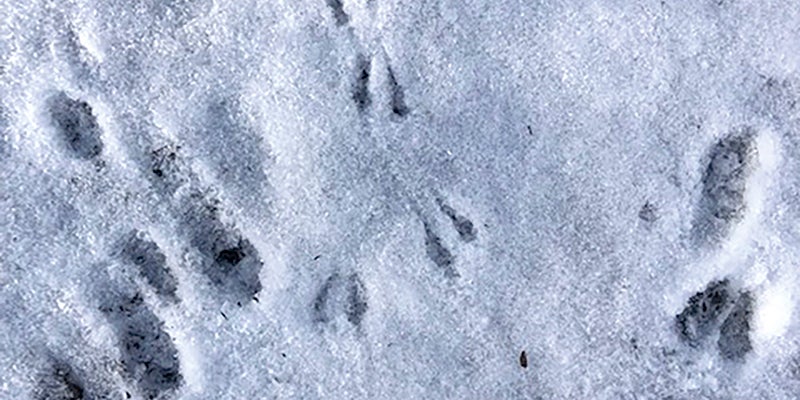Nature Notes: Winter wildlife tracking
Published 8:19 pm Thursday, December 30, 2021

- Photos by Greta Wilkening
|
Getting your Trinity Audio player ready...
|
By Julie Champlin
Winter in Minnesota offers an excellent opportunity to observe a part of nature that we might not see otherwise. Looking for animal tracks in the snow (paw prints) in your yard or here at the nature center is a fun activity that you can do on your own or with family and friends. You may be surprised at how much you can learn about animals that visit your yard or visit the Nature Center. Winter snow makes it easier to find and follow tracks whether you are a novice or an expert tracker. The best tracks are found after a new snowfall so get out early before the trails get spoiled by people tracks or warm temperatures melting the snow and distorting the paw print.
Following wildlife is often a magical experience. While observing the paw prints and the path of the animal you can use your imagination and begin to think like the wild critter you are following. Moving alongside the set of tracks, you can find out whether the animal climbed a tree, increased its speed from slow to fast or found its cache of food.
Using a mammal track guidebook or an app will help you identify the animals you are tracking. One of my favorite novice guidebooks is “Mammal Tracks and Scat,” by Lynn Levine and Martha Mitchell that I have used with my grandchildren. The life size, water proof paw print on the pages of the book makes for easier identification. Prepare for your winter adventure with warm attire for venturing outside, your phone or camera to take photos and a measuring tape.
Identifying the movement pattern is essential in identifying the animal. There are walkers and trotters, hoppers, waddlers and bounders. Walkers and trotters have four toes and walk with a smooth trotting gate. They are red and gray fox, cats, bobcats, coyotes, dogs and wolves. Also included are hooved animals like deer and moose. They have heart shaped tracks as well as two circular impressions toward the back of the track. Hoppers have large hind feet that are significantly longer than their front feet. They jump by pushing off with their hind feet landing on their front feet and then swing their back feet to the front. They include cottontail rabbits, snowshoe hares, shrews, chipmunks, mice, voles, chipmunks and red and gray squirrels. Waddlers are often referred to as overstep walkers, they have heavy bodies and short legs with small front feet. The larger hind leg often oversteps the front foot. Waddlers are bears, beavers, muskrats, skunks, woodchucks, raccoons, porcupines and opossums. Bounders have long narrow bodies and short legs. They crouch and jump off their back feet. When they are in the air they are fully stretched out. When landing, one front foot arrives before the other and then both feet lift up allowing the back feet to take their place. Bounder tracks are mostly hind prints. Members of this group are weasels, fishers, otters, martens and mink.
In open fields look for wing imprints of hawks and owls in the snow which these birds leave behind when they swoop in to capture prey.
Animal tracks are a powerful tool for learning about the wildlife around you. With a little effort and guidance, anyone can identify many clear animal tracks and signs with ease. Winter is an excellent time to discover the animals that live around us. Enjoy the snow!


